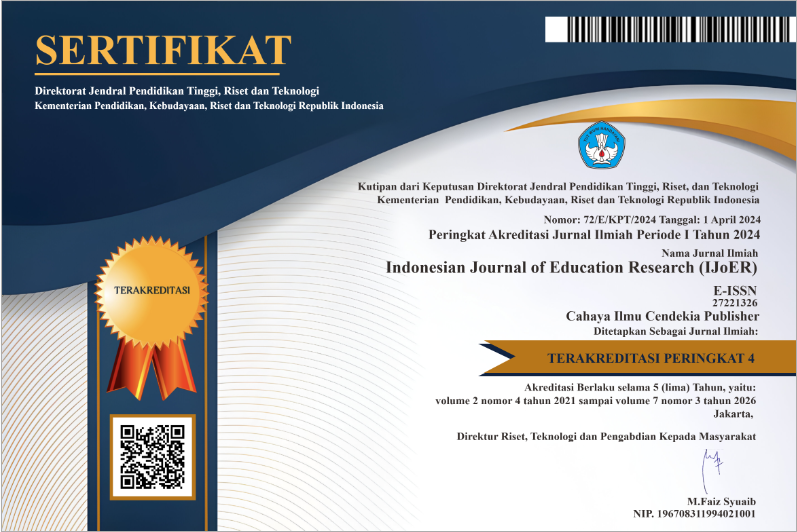The Effect Of Using Animation Videos In English Teaching On Students’ Listening Skills: An Experimental Study At Sma N 10 Batanghari Grade X Academic Year 2016/2017
Abstract
Purpose of the study: The purpose of this study was to determine the significant effect of using animated videos in teaching on students' listening skills.
Methodology: This research used a true experimental design with pre and posttest design. The sample was tested by using pretest-posttest control group designs. There were four classes for tenth grade student there. It was started from X1 to X4. The design of this research was an experimental research. The population of this research was the tenth (X) grade students of SMA N 10 Batanghari, in 2016/2017 of academic year. The totals sample is of tenth graders are 113 students. The classes were taken for experimental and control classes were X3 and X4. In experimental research, we need pre-test and post-test to measure the ability of the students. The data gathered from students’ score in posttest and pretest from control and experimental class. The data were analyzed by using the independent t-test to see the significant effect of using animation videos on students’ listening skills. This research compared to both of experimental class and control class by using media in teaching. The experimental class used some animation videos, while the control class used the conventional way. The formula of T-test.
Main Findings: The findings of this study indicate that the use of animated videos has a significant effect in teaching English on students' listening skills at SMA N 10 Batanghari.
Novelty/Originality of this study: This study uses animated videos in teaching English to determine the effect on students' listening skills.
References
F. Endang, S. Z. Ariatmi, M. Laila, D. Srijono, A. Wijayanto, R. Fatmawati, A. Praestyarni, & N. Hidayat, “Pendalaman materi bahasa Inggris,” 2014.
C. David, “English as a global language, second edition,” New York: Cambridge University Press, 2003.
W. Kretsai, “Effect of using video materials in the teaching oflistening skills for university students,” International Journal of Linguistics, 6, 1-13, 2014.
M. Kiki, I. Supardi, & Wardah, “The use of animated short film as media for teaching English narrative writing,” 1, 1-19, 2014.
P. B. Logi, M. Sukirlan, & D. Supriyadi, “A comparative study of students’ listening comprehension taught through video and audio,” 1, 1-14, 2014.
G. Marczyk, D. DeMatteo, & D. Festinger, “Essential of research design and methodology,” Canada: John Wiley & Sons, 2005.
J. W. Creswell, “Educational research: Planning, conducting, and evaluating quantitative and qualitative research,”. Boston: Pearson Education, Inc, 2012.
Sugiyono, “Metode Penelitian Kuantitatif Kualitatif dan R&D,” Bandung: Alfabeta, 2009.
J. B. Heaton, “Classroom Testing,” London : Longman Group Limited, 1990.
E.S. Pearson, & H. O. Hartley, “Biometrika Tables for Statisticians,” Biometrika Trustees, 1966.
P. Aek, “Experimental research methods in language learning,” New York: Bloomsbury Academic, 2014.
R. Ahmed, “How Can English Learners Improve Their Listening Comprehension?”.Retrieved February 16, 2016, fromhttps://www.britishcouncil.org/voices-magazine/five-essential-listeningskills-english-learners. Animation (n.d). Retrieved October 24, 2015, fromhttp://minyos.its.rmit.edu.au/aim/a_notes/anim_intro.html
Authors who publish with this journal agree to the following terms:
- Authors retain copyright and acknowledge that the Indonesian Journal of Education Research (IJoER) is the first publisher licensed under a Creative Commons Attribution 4.0 International License.
- Authors are able to enter into separate, additional contractual arrangements for the non-exclusive distribution of the journal's published version of the work (e.g., post it to an institutional repository or publish it in a book), with an acknowledgment of its initial publication in this journal.
- Authors are permitted and encouraged to post their work online (e.g., in institutional repositories or on their website) prior to and during the submission process, as it can lead to productive exchanges and earlier and greater citation of published work.






.png)
.png)




















